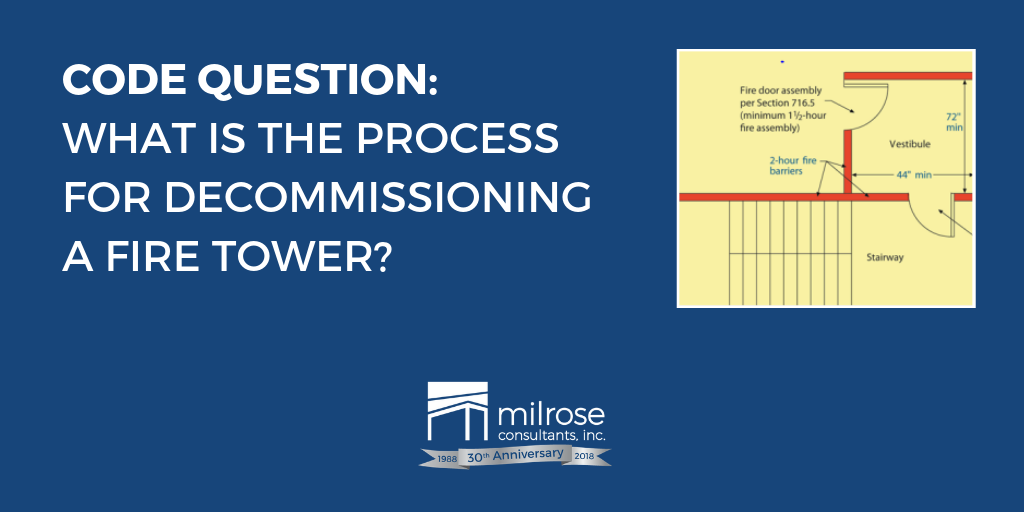Fire towers are stairways that are separate from a main building, accessed via outside balconies or fireproof vestibules. Many older buildings have fire towers because they were a required means of egress in most commercial and public buildings over 75 feet in height that predate the 1968 building code.
Since fire towers are separate from the main building, they are typically safer than alternative means of egress, so decommissioning these fire towers is not recommended from a safety standpoint. However, building owners may decommission existing fire towers in some cases.
Decommissioning process
Before a building’s fire tower can be decommissioned, the building must first be altered to comply with the 1968 code; this may include changes such as fire alarm upgrades, sprinklers throughout the entire building, smoke purge or stair pressurization systems, emergency power for elevators, and standpipe systems. Additionally, the existing building should be analyzed from an occupancy and egress standpoint to see if it would make sense to decommission a fire tower, since that would alter the way occupants exit the building.
After ensuring compliance with the 1968 code and determining the feasibility of changing the building’s egress system, the next step is applying to the New York City Department of Buildings (DOB) for a full building Alteration Type I (ALT 1) to reclassify the building as a 1968 code building. At that point, an application to decommission the fire tower can be submitted. This application must explain how building occupants can safely exit without the fire tower. DOB officials will then determine if the fire tower may be decommissioned. The DOB may or may not approve these applications.
Changes in fire safety requirements
Recently, increased fire safety requirements in local laws has sparked interest in decommissioning fire towers.
For instance, Local Law 5 of 1973 was created to increase safety in office buildings. It required that office buildings—when they exceed 100 feet in height and have air conditioning or mechanical ventilation systems that serve floors other than the floors where the equipment is located—must have either a smoke shaft to mechanically vent smoke/heat or must have stair pressurization.
Local Law 26 of 2004 required that buildings over 100 feet in height must have sprinkler systems retroactively installed throughout the entire building by 2019.
As a result of these local laws, some developers are hoping to decommission their fire towers, since the buildings are now required to update their fire/life safety systems, which is part of the decommissioning process.
For additional questions or comments on fire towers, please contact Milrose Consultants.








